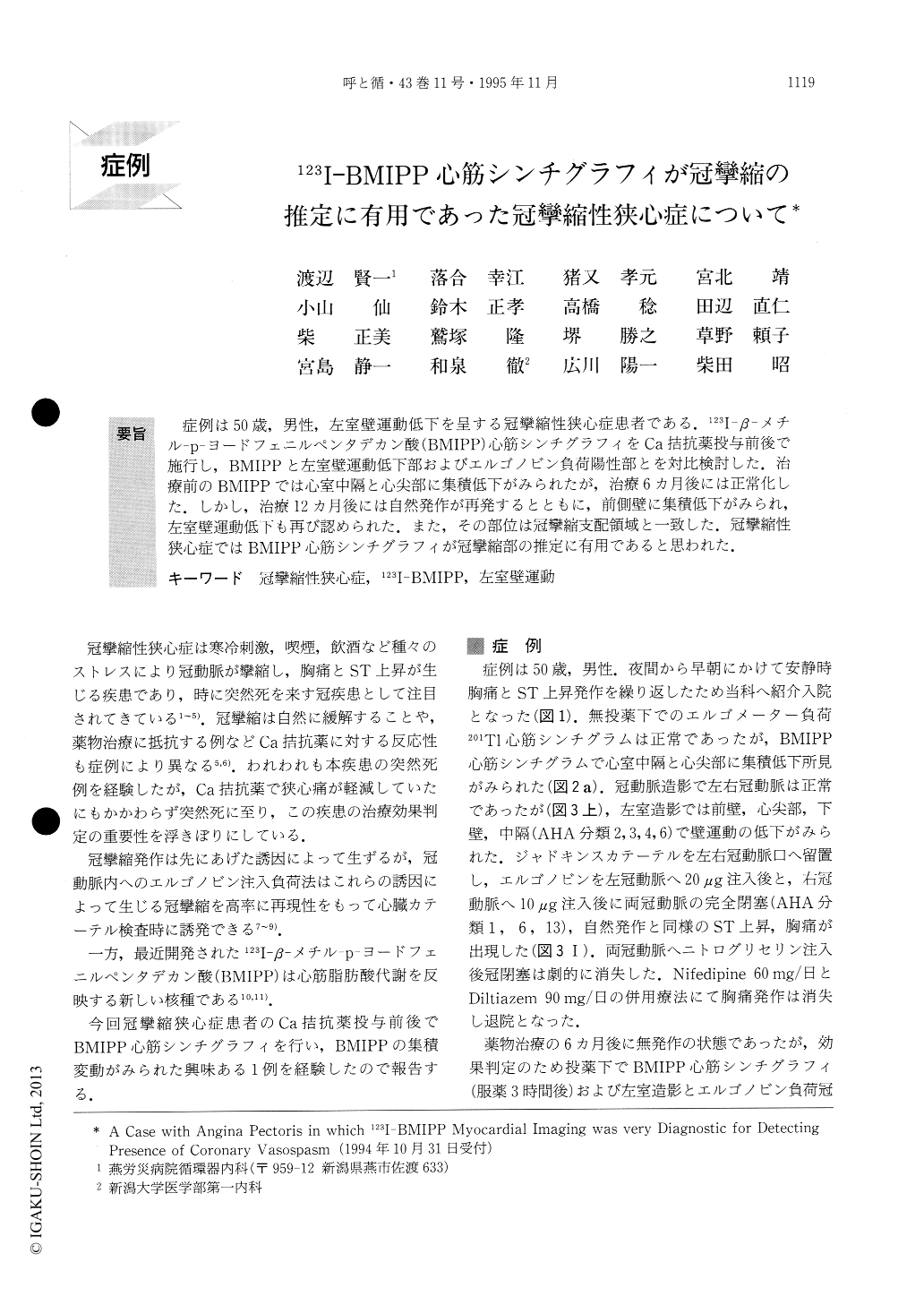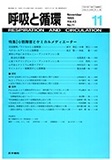Japanese
English
- 有料閲覧
- Abstract 文献概要
- 1ページ目 Look Inside
症例は50歳,男性,左室壁運動低下を呈する冠攣縮性狭心症患者である.123I-β-メチル-p-ヨードフェニルペンタデカン酸(BMIPP)心筋シンチグラフィをCa拮抗薬投与前後で施行し,BMIPPと左室壁運動低下部およびエルゴノビン負荷陽性部とを対比検討した.治療前のBMIPPでは心室中隔と心尖部に集積低下がみられたが,治療6カ月後には正常化した.しかし,治療12カ月後には自然発作が再発するとともに,前側壁に集積低下がみられ,左室壁運動低下も再び認められた.また,その部位は冠攣縮支配領域と一致した.冠攣縮性狭心症ではBMIPP心筋シンチグラフィが冠攣縮部の推定に有用であると思われた.
We report a case (50-year-old man) with vasospastic angina. He associated with hypokinetic left ventricular wall motion even in attack free time. Following up this patient, we compared results of 123I-β-methyl-p-iodo-phenyl pentadecanoic acid (BMIPP) myocardial image with both of left ventricular wall motion and coronary ergonovine provocation. The BMIPP imaging, er-gonovine coronary provocation and left ventriculogra-phy were applied before and after calcium antagonist treatment. A decreased tracer-uptake was noted at intraventricular septum and apical region before treat-ment. After 6 months the uptake was dramatically improved. But after 12 months treatment, the decreased BMIPP uptake in the anterolateral wall was noted again, and its site corresponded to the region deteriorat-ed wall motion indicated by left ventriculography. The decreased BMIPP uptake closely correlated with er-gonovine provocation positive area.
In the patient with vasospastic angina, BMIPP scan seemed to be useful detecting the site of spastic area.

Copyright © 1995, Igaku-Shoin Ltd. All rights reserved.


